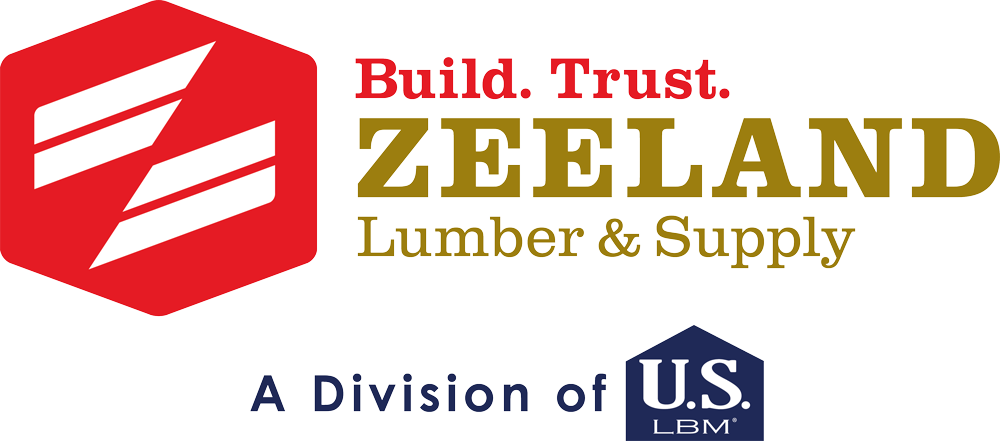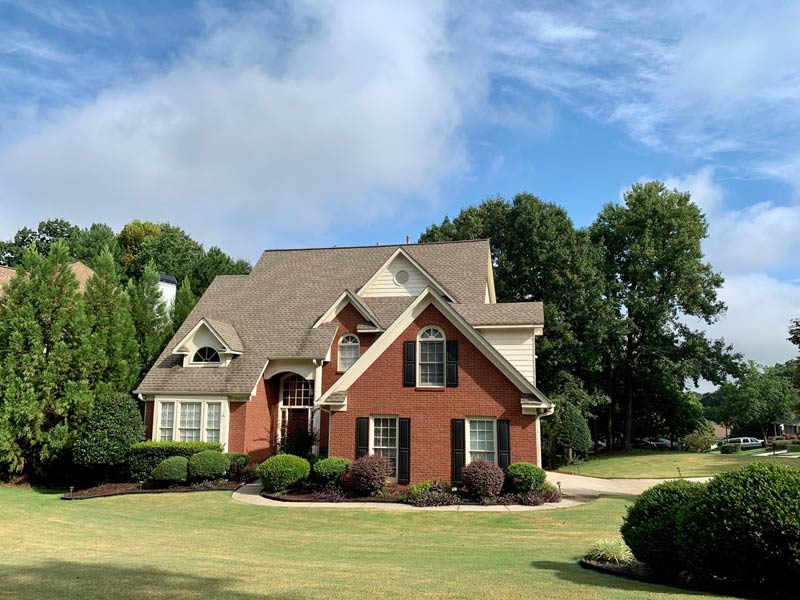Roofing styles and types are just as diverse as the kind of homes they protect. You may need to know what kind of roof you have if you need to get your roof repaired or replaced or to understand what kind of maintenance it needs.
We’ll help you figure this out by discussing roof types in two ways: roofing styles and roofing materials.
What Kind of Roof Do I Have? 5 Common Roof Styles
Your roof style describes the shape and slope of your roof. Some roofing materials work best on different roof types based on their style. Style and slope can also determine the maintenance level of your roof.
The five common roof styles are gable, hip, gambrel, shed, and flat:
Gable Roof Style
A gable roof is the most common roofing style. It features two planes that meet in a traditional peak. The slope of the roof planes can be adjusted based on how steep you want them to be.. Gable roofs with a steep slope are common in areas that receive a lot of snow to prevent buildup.
Hip Roof Style
Another popular roof style is the hip roof. Hipped roofs are similar to gable roofs, except they have 4 planes that meet at a center ridge running lengthwise. An advantage of the hip roof is that all 4 sides of the home are protected from weather. Hipped roofs generally have a gentle slope to allow water and snow to drain away easily.
Gambrel Roof Style
Gambrel roof style is reminiscent of a traditional barn shape. It features a shallow slope at the peak and steeper-sloped planes below. Gambrel roofs allow for more living space on the upper story of the home. Gambrel roofs might require more maintenance than gable roofs after high wind or extreme weather.
Shed Roof Style
The shed roof, or lean-to, features one solitary pitch. The simple roof style is used to create dramatic interior design, usually for a modern effect. Shed roofs allow for more light and visibility from inside the home, but also leave more sides of the structure unprotected from wind-driven rain.
Flat Roof Style
Flat roofs are common on commercial buildings and large residential structures like apartments, but can also be found on modern-style homes. Flat roofs are typically covered in a thick, protective rubber. They require good drainage to prevent water from pooling and seeping through to the living space below. One advantage of a flat roof style is that it can provide additional outdoor living space when properly supported.
Many homes have a roof that combines two or more roof styles. Each part of the roof will have different maintenance needs to remove leaves and debris and to check for moisture, loose shingles, or other damage. Understanding roof styles can help you keep your home’s roof in good condition to protect it throughout the year.
What Kind of Roof Do I Have? 3 Roofing Material Types
Roof types also differ by roofing materials. Sloped roofs typically use shingles or metal roofing materials, where flat roofs typically use rubber to protect them and prevent moisture from seeping through. Let’s go through these roofing material types to help you figure out what kind of roof you have.
Shingle Roofing Materials
Shingles are a common roofing material. The most popular shingle roofing materials are asphalt shingles and wood shakes and shingles.
Asphalt Shingles
Asphalt shingle roofs are the most common type of roofing for a reason. Asphalt roofing materials are easy to install and come in a variety of shades and textures for every home and budget. There are two main types of shingles: 3-tab and architectural.
- 3-Tab Asphalt Shingles: 3-tab shingles are the most affordable type of shingle, and they’re easy to install — especially for experienced DIYers.
- Architectural Asphalt Shingles: Architectural shingles have more layers of asphalt, so they offer more dimension and visual contrast — as well as more protection — than 3-tab shingles.
Wood Shakes and Shingles
Wood shakes and shingles are resistant to weather and impact, and bring a warm, rustic feel to your home’s exterior design. Wood shingles are machine-made, while wood shakes are typically made by hand. Wood shakes are made from unevenly split wood pieces, so they are typically thicker than shingles and offer attractive contrast and texture.
Metal Roofing Materials
Metal roofing is increasingly popular because of its long-lasting protection, energy efficiency, and durability. Metal roofing materials are much lighter than asphalt shingles, so they put less stress on your home’s structure.
Metal roofing materials come in three forms:
- Metal roofing tiles
- Standing seam metal roof
- Corrugated metal roof
Flat Roof Materials
To protect a flat roof, shingles or metal roofing aren’t effective at insulating and protecting the surface from pooling water. Instead, most flat roofs use TPO or EPDM rubber. These roofing materials are easily distinguishable. If you have a flat roof that’s white, it’s likely a TPO rubber roof. A roof covered in thinner, black rubber is most likely EPDM rubber.
What Kind of Roof Do I Have? Roof Repair & Maintenance
Understanding what kind of roof you have can help you prepare for regular maintenance and notice signs that your roof needs repair or replacement. For example, shingle roofs require more regular maintenance than metal roofs. Loose or missing shingles should be replaced to prevent moisture from getting to the sensitive layers of your roof and causing damage. Some roof styles, like sloped roofs, require extra safety supplies to access them and perform maintenance.
No matter what kind of roof you have, Zeeland Lumber & Supply has all the materials you need to maintain, repair, or replace it. We carry supplies from top, trusted brands like CertainTeed and GAF so you can build a quality roof — and take care of it, too. Stop in to see our selection or give us a call to talk about your roofing needs.

